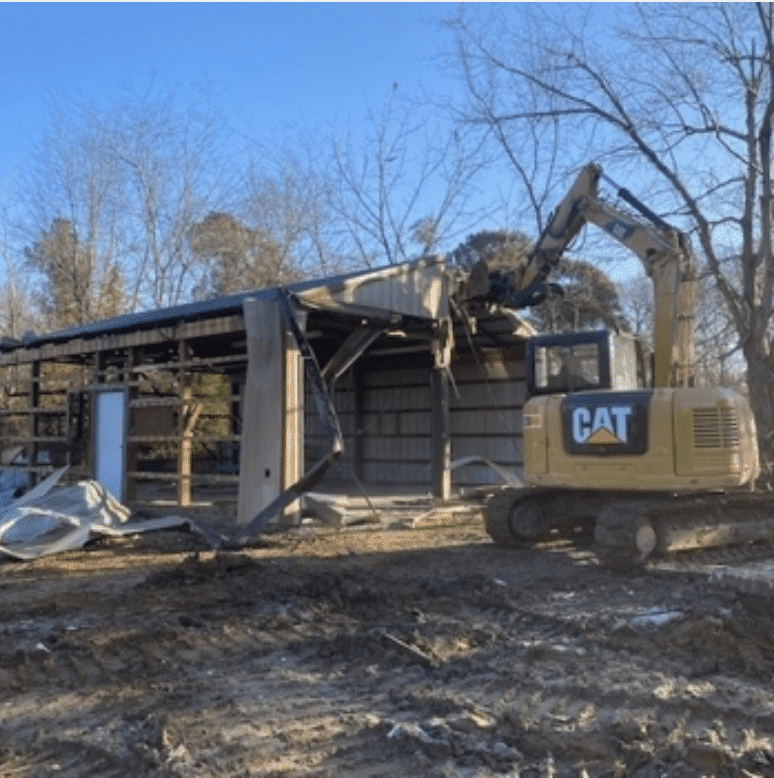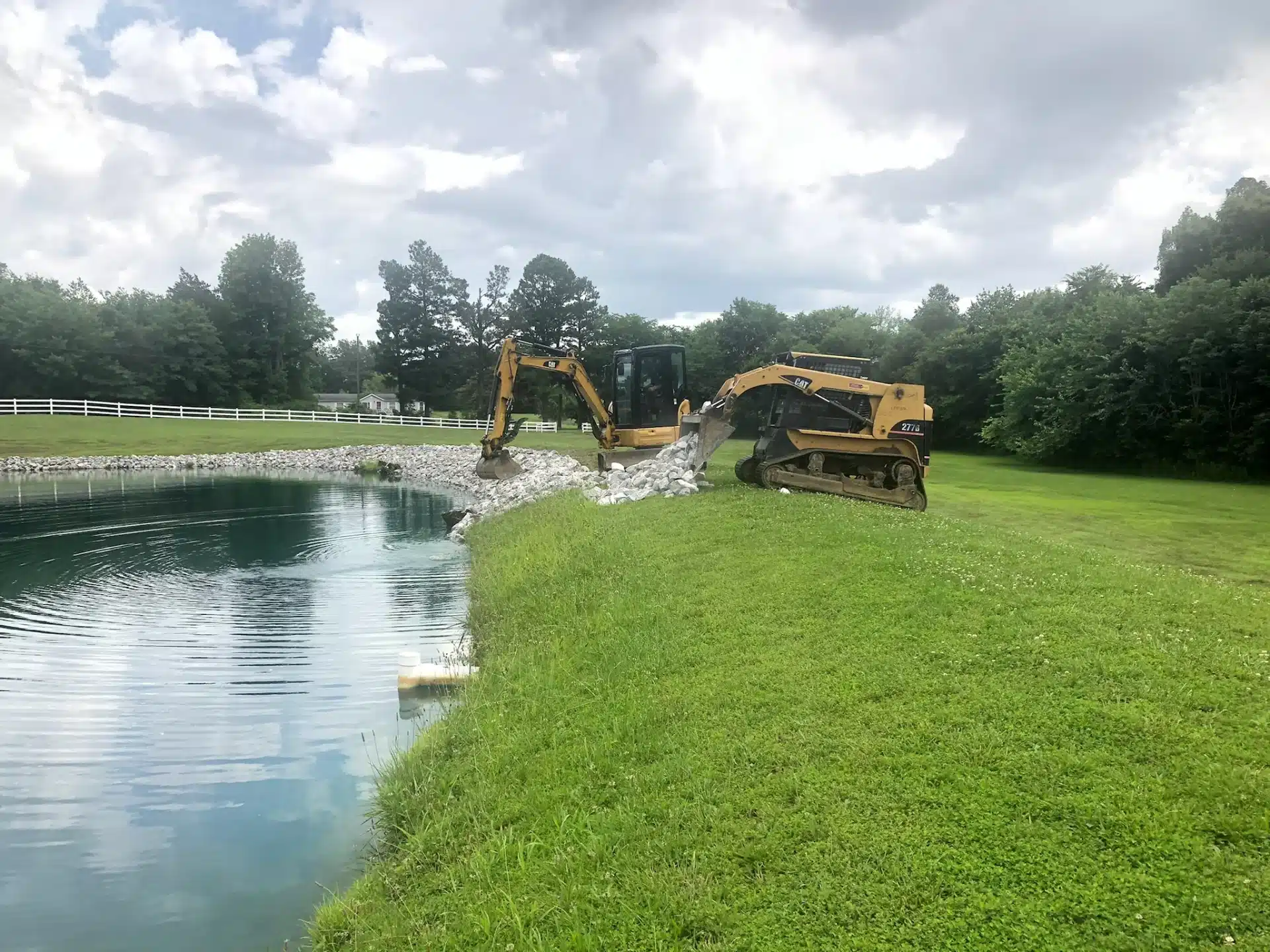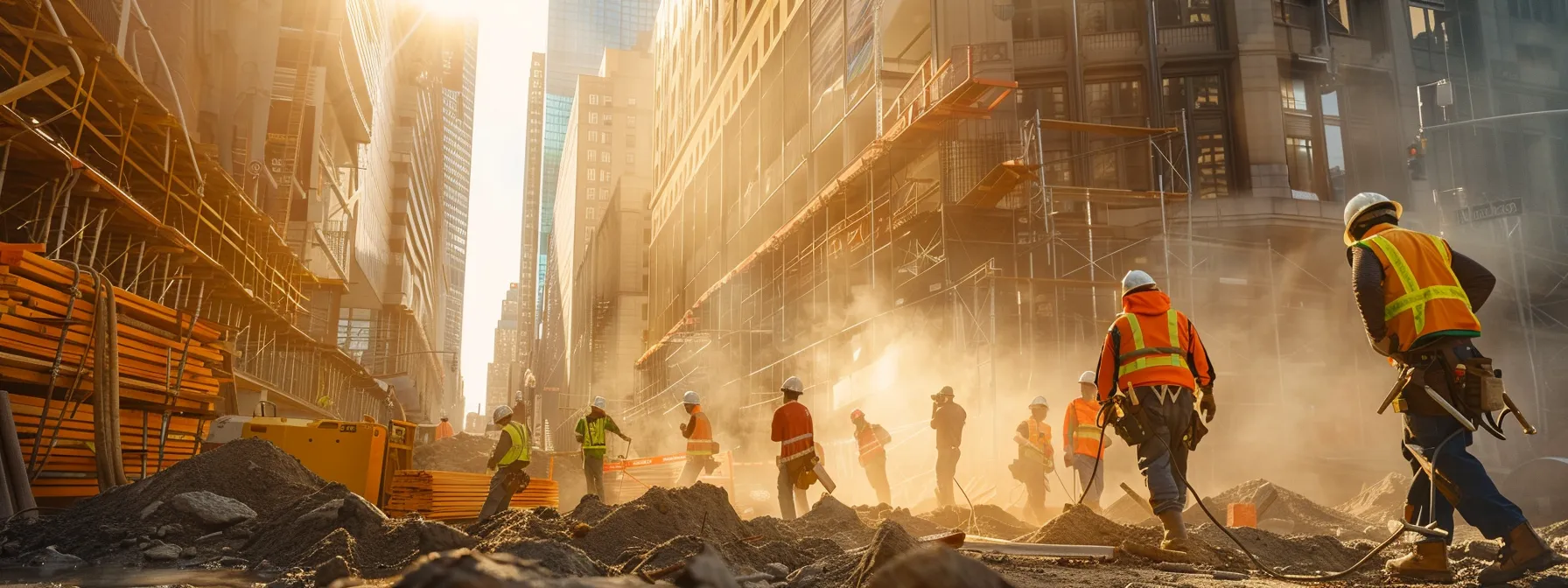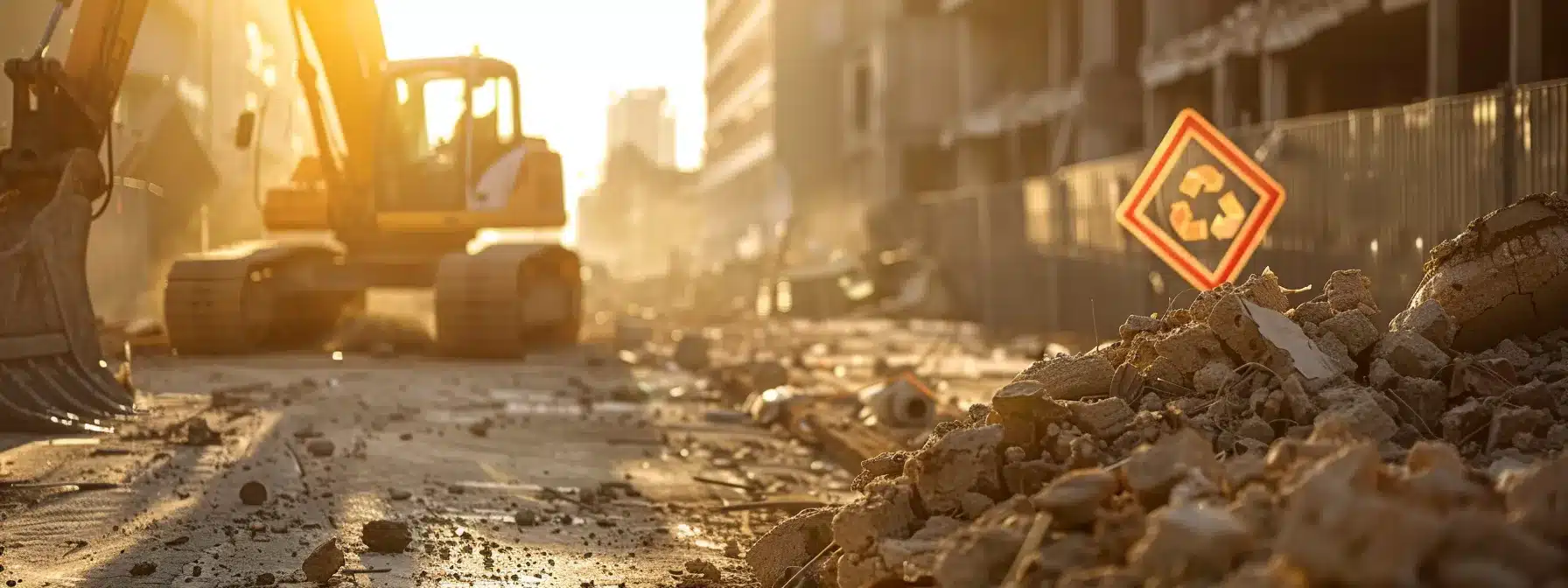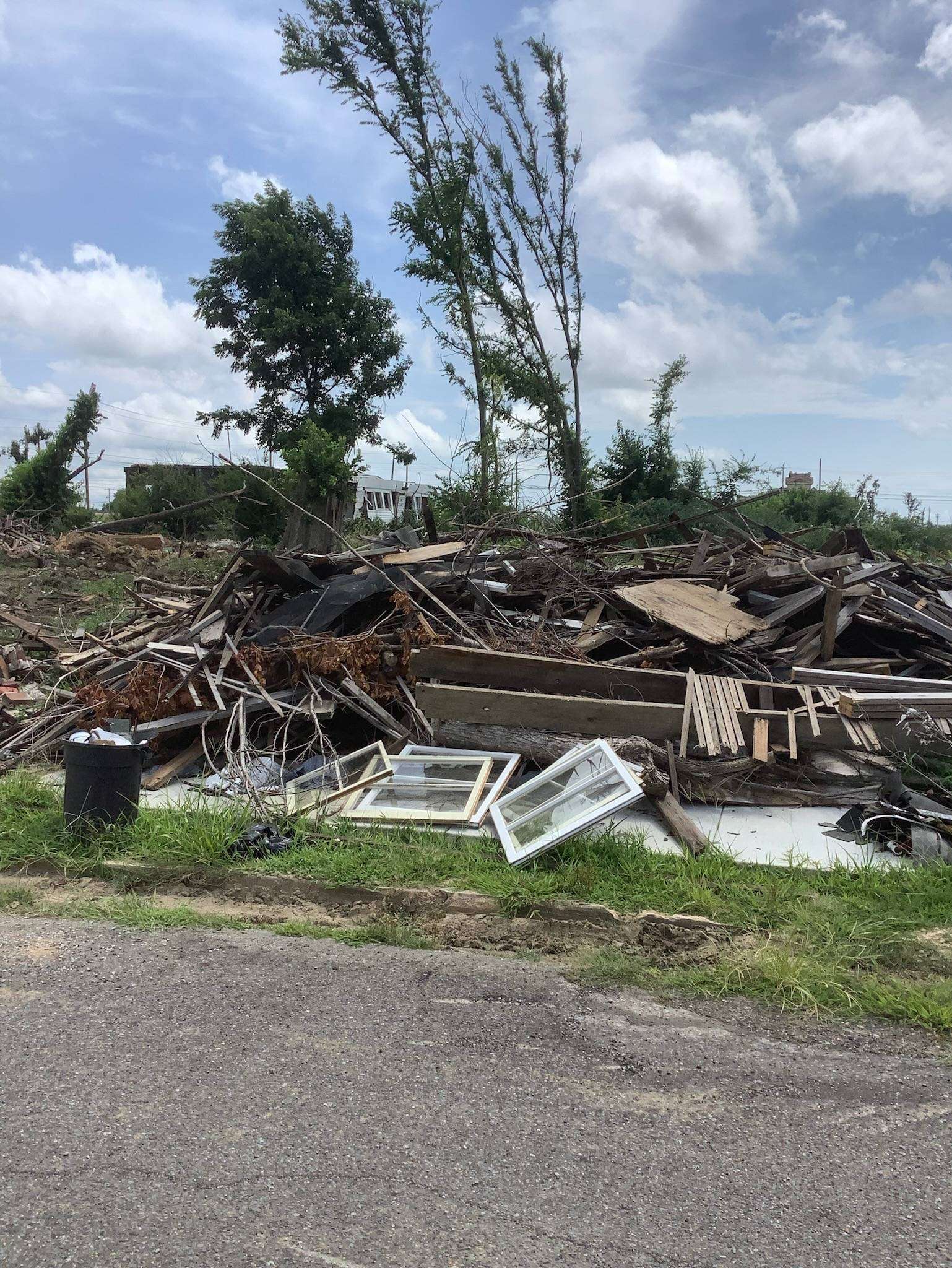Crucial Point to Note:
- Understanding erosion: Erosion is a concern after land clearing due to its negative impact on soil quality and water resources. It is important to be aware of the different types of erosion and their effects to effectively prevent erosion.
- Preventing erosion during construction: Proper planning and strategic approaches are essential to minimize erosion. Utilizing vegetative cover, scheduling excavations based on rainfall conditions, and limiting the usage of heavy equipment can help control erosion during construction.
- Implementing sediment control methods: Sediment ponds, gravel entrances, and silt fences are effective tools in minimizing the impact of erosion. Tailoring erosion and sedimentation control plans to specific areas is crucial for successful erosion prevention.
Introduction: Understanding the Impact of Erosion After Land Clearing
As we clear land for various purposes, it is crucial to understand the potential consequences of erosion that may follow. Erosion, a natural process of soil displacement, can cause significant environmental damage if left unchecked. Let’s delve into the impact of erosion after land clearing and why it is a cause for concern. We’ll explore the connection between construction sites and erosion, shedding light on the correlation between human activities and this environmental issue. Additionally, we’ll examine the far-reaching consequences that erosion can have on the ecosystem.
What is erosion and why is it a concern?
Erosion is the natural process of soil and sediment movement caused by external factors like wind, water, or ice. It becomes a concern when land clearing occurs due to the increased vulnerability of bare soil to erosion. This can lead to various environmental consequences such as reduced soil quality, water pollution, and negative impacts on aquatic life and vegetation growth. The loss of fertile topsoil through erosion can also hinder agricultural productivity and contribute to global food insecurity. Preventing erosion is essential for maintaining ecosystem health and preserving natural resources.
Construction sites and erosion go together like soil and water – a destructive duet that leaves nothing but a muddy mess.
The connection between construction sites and erosion
Construction sites have a significant impact on erosion rates. The disturbance of natural landscapes during construction leads to the removal of vegetative cover and the disruption of soil structure, making it more susceptible to erosion. Increased surface runoff from construction sites can result in rain erosion, sheet erosion, rill erosion, gully erosion, and streambank erosion. These various types of erosion can lead to reduced soil quality and water pollution through the accumulation of sediment and excess nutrients in nearby bodies of water. Therefore, it is crucial for construction companies to implement proper erosion prevention measures in order to minimize their impact on the environment.
To prevent erosion after land clearing, construction companies should consider using strategies such as maintaining vegetative cover, phasing their construction activities strategically, scheduling excavations during optimal rainfall conditions, utilizing vegetation and mulch to control soil displacement, and limiting heavy equipment usage to prevent soil compaction. Sediment control methods like sediment ponds, gravel entrances, and silt fences can also be effective in minimizing the impact of erosion. By implementing these measures and collaborating with environmental agencies and local communities, contractors can take responsibility for sustainable construction practices that balance economic development with environmental preservation.
It is essential for construction companies to recognize the connection between construction sites and erosion in order to address its negative impacts on the environment effectively. Failing to do so can result in reduced soil quality, water pollution, damage to aquatic life and vegetation growth, and a general deterioration of natural resources. By taking proactive steps to prevent erosion after land clearing through proper planning and implementation of sediment control methods, contractors can ensure that their construction activities are environmentally responsible while still achieving economic objectives. So don’t miss out on this opportunity to make a positive impact by mitigating erosion and adopting sustainable practices in your construction projects.
The aftermath of land clearing: erosion brings nature’s revenge and uncovers the dirty truth.
The environmental consequences of erosion after land clearing
Erosion after land clearing can have significant environmental consequences. This includes reduced soil quality, water pollution, and negative impacts on aquatic life and vegetation growth. Sediment from eroded soil can lead to eutrophication and turbidity, further degrading water resources. To prevent these consequences, proper planning before construction is crucial. Strategies such as using vegetative cover, scheduling excavations during optimal rainfall conditions, and limiting heavy equipment usage can help mitigate erosion. Implementing sediment control methods like sediment ponds and gravel entrances can also minimize the impact of erosion. By taking responsibility for sustainable construction practices, we can balance economic development with environmental preservation.
From gentle rain to raging gullies, erosion comes in all shapes and sizes, wreaking havoc on construction sites and the environment alike.
Types of Erosion: Identifying the Main Culprits
When it comes to preventing erosion after land clearing, understanding the main culprits is crucial. In this section, we’ll dive into the different types of erosion that can occur and their impacts on the land. Rain erosion is one of the most common types, causing degradation due to water droplets hitting the soil surface. Sheet erosion, on the other hand, covers a large area and can lead to substantial soil loss. Rill erosion forms small channels, while gully erosion poses a more significant threat. Lastly, streambank erosion directly affects our water resources. Delving into each of these types will provide valuable insights into combatting erosion effectively.
Rain erosion and its effects
Rain erosion, also known as water erosion, is a significant type of erosion caused by rainfall. It has detrimental effects on the land and can lead to various environmental issues. Rain erosion occurs when raindrops impact the soil surface, dislodging and transporting soil particles. This process can result in the loss of fertile topsoil, decreased soil quality, and reduced vegetation growth. Additionally, rain erosion contributes to the sedimentation of rivers and streams, leading to water pollution and damage to aquatic life. Therefore, it is essential to address rain erosion during land clearing and construction activities to mitigate its negative impacts on the environment. Rain erosion can cause significant damage not only at the construction site but also downstream in water bodies like rivers and streams. The force of raindrops hitting bare soil or loose sediment can displace particles and create channels for water flow, leading to sheet erosion. Sheet erosion spreads over large areas and removes valuable topsoil that is crucial for plant growth. Moreover, excessive runoff resulting from rain erosion can cause gully formation, streambank destabilization, and increased turbidity in nearby water resources. In addition to these effects, rain erosion also plays a role in nutrient loading and eutrophication of water bodies. When eroded sediment carries excess nutrients such as nitrogen and phosphorus into rivers or lakes, it leads to eutrophication – an overgrowth of algae and aquatic plants that deplete oxygen levels in the water system. This can harm fish populations and other aquatic organisms by reducing their access to oxygen-rich habitats. To illustrate the consequences of rain erosion on a construction site, consider a project where land was cleared without implementing proper erosion control measures before rainfall events. As heavy rains pour down onto exposed soil surfaces, an extensive amount of sediment gets carried away by stormwater runoff into nearby streams. This results in increased turbidity levels in the waterbody affecting aquatic life negatively. Additionally, as soil gets displaced from the construction site through rain erosion, it can lead to soil compaction, nutrient loss, and reduced vegetation growth. The impact of rain erosion can be mitigated by implementing sediment control methods and adopting sustainable construction practices that prioritize erosion prevention. Sheet erosion: nature’s way of dragging away the evidence.
Sheet erosion: a widespread erosion type
Sheet Erosion: A Pervasive Form of Soil Degradation
Sheet erosion, a common and widespread type of erosion, poses significant concerns for land clearing activities. It occurs when water flows over the land surface in thin layers, gradually removing the topsoil. This process occurs uniformly across large areas, causing the loss of valuable soil nutrients and organic matter.
This erosion type exacerbates other forms of erosion, such as rill or gully erosion, by creating an increased susceptibility to soil detachment and transport. Sheet erosion is particularly problematic due to its cumulative effect over time. As the eroded sediments are transported downstream, they can cause sedimentation in water bodies, leading to further environmental degradation.
In addition to its detrimental effects on soil quality and fertility, sheet erosion also impacts vegetation growth and aquatic life. The loss of topsoil reduces the capacity of plants to absorb necessary nutrients for healthy growth while increasing nutrient runoff into nearby water bodies. This excess nutrient input can lead to eutrophication, causing harmful algal blooms and reducing oxygen levels crucial for aquatic organisms.
One study conducted in a construction site highlighted the damaging consequences of sheet erosion. Due to improper mitigation practices, large-scale soil displacement occurred during heavy rainfall events. The eroded sediments clogged nearby streams and rivers, resulting in fish kills and disrupted ecosystems. This unfortunate incident emphasizes the urgent need for effective measures against sheet erosion during land clearing activities.
Why go on a river cruise when you can watch miniature channels being formed right in your own backyard? Introducing rill erosion, Mother Nature’s version of soil sculpting.
Rill erosion: the formation of small channels
Rill erosion, characterized by the formation of small channels, is a significant erosion type. These channels are typically shallow and narrow, often measuring only a few inches deep and several feet wide. Rill erosion occurs when surface water flows over the land, picking up soil particles and gradually cutting small channels as it moves downhill. This type of erosion can be particularly problematic because it can lead to the development of more severe forms of erosion, such as gully erosion. To prevent rill erosion, implementing effective sediment control measures, such as stabilizing construction site access with gravel entrances, is crucial. By addressing rill erosion early on, we can minimize its impact and protect our valuable land resources for future generations. Take action now to prevent rill erosion before it leads to more severe consequences.
Gully erosion: Where Mother Nature goes full-on demolition crew, leaving behind a hazardous mess.
Gully erosion: a more significant threat
Gully erosion poses a significant danger due to its destructive nature. The forceful flow of water carves deep channels into the soil, leading to the formation of gullies. These gullies can grow larger over time and have severe consequences for the surrounding environment.
Gully erosion is characterized by the formation of deep channels in the soil caused by the powerful flow of water. This type of erosion is more severe compared to other forms and can result in extensive damage to landscapes and infrastructure. It often occurs on construction sites where land clearing has taken place, exacerbating its impact on the environment.
Unlike other types of erosion such as rain, sheet, and rill erosion, gully erosion creates large channels that are difficult to control or mitigate. These channels can lead to increased sediment runoff and loss of fertile topsoil. Additionally, gullies can cause significant damage to infrastructure such as roads and buildings if left unchecked.
A historic example of gully erosion’s threat is found in the Dust Bowl era during the 1930s in the United States. Prolonged drought combined with poor farming practices led to massive soil erosion, with gullies forming across vast agricultural areas. The resulting dust storms devastated crops, displaced communities, and had long-lasting environmental and economic impacts.
Overall, it is crucial to address gully erosion effectively by implementing appropriate prevention and mitigation measures. By understanding its significant threat, proactive steps can be taken to minimize its destructive effects on ecosystems and infrastructure alike.
Drowning in water woes: Streambank erosion floods the troubles of our precious water resources.
Streambank erosion: the impact on water resources
Streambank erosion can have significant consequences for water resources. As the soil on streambanks is eroded away, it can lead to increased sedimentation in the streams and rivers. This sedimentation can negatively impact water quality by reducing oxygen levels and blocking sunlight, which in turn can harm aquatic life and vegetation. Additionally, streambank erosion can alter the natural flow of water, leading to changes in water volume, velocity, and temperature. These changes can disrupt the balance of ecosystems that rely on stable stream conditions.
To mitigate the impact of streambank erosion on water resources, several measures can be taken. The implementation of vegetative cover along streambanks helps stabilize the soil and prevent erosion by absorbing excess moisture and reducing surface runoff. Implementing erosion control practices such as bioengineering techniques or utilizing geotextiles can provide additional stability to streambanks.
Furthermore, maintaining riparian buffers along the streams can help filter sediment and pollutants before they enter the waterways. Planting native vegetation in these buffer zones not only provides stability but also offers shade that helps regulate water temperature and creates habitats for a variety of species.
Overall, addressing streambank erosion is crucial for preserving water resources. By taking proactive measures to prevent erosion and promote sustainable construction practices near water bodies, we can protect aquatic ecosystems and ensure a healthy environment for both human communities and wildlife alike.
Construction sites and erosion go together like a wrecking ball and a sandcastle.
Effects of Erosion from Construction Sites
In this section, I will be discussing the effects of erosion from construction sites and the detrimental consequences it brings. Land clearing activities can lead to reduced soil quality, causing long-term damage to the land and its ability to support vegetation. Furthermore, the dangers of water pollution arise from the sediment and excess nutrients that enter our water systems. We will delve into the concept of eutrophication and turbidity, and how these factors impact aquatic life and vegetation growth. It is essential to understand these effects in order to effectively prevent erosion and protect our environment.
Reduced soil quality: the negative consequences
When soil quality is diminished, it can lead to a range of detrimental effects. The negative consequences of reduced soil quality include decreased fertility, limited nutrient availability, and compromised water holding capacity. These factors hinder plant growth and agricultural productivity. Additionally, erosion can expose the underlying subsoil, which may be less fertile and contain fewer organic matter and beneficial microorganisms. As a result, it becomes more challenging to restore the soil’s health and productivity.
In construction sites where erosion occurs after land clearing, the ramifications on soil quality are significant. Exposed bare ground is vulnerable to rain erosion, where rainfall displaces soil particles and carries them away as sediment. This leads to a loss of topsoil, which is rich in nutrients essential for plant growth. The removal of topsoil diminishes the soil’s ability to retain water and sustain vegetation.
Furthermore, sheet erosion caused by surface runoff further exacerbates the reduction in soil quality. As water flows over impermeable surfaces or compacted soils, it gains velocity and erodes large areas uniformly. This uniform removal of soil layers further disrupts its structure and fertility.
Moreover, rill erosion contributes to reduced soil quality by creating small channels in the landscape. These channels guide runoff during rainfall events, causing the displacement of additional soil particles. Over time, this continuous erosion hinders plant growth by removing nutrient-rich topsoil layers.
These negative consequences can be compounded by gully erosion when unchecked runoff creates deep channels that carry away substantial volumes of sediment from construction sites. Gullies not only strip away fertile topsoil but also alter the landscape significantly.
To prevent these detrimental effects on reduced soil quality after land clearing, it is crucial to employ effective erosion prevention measures during construction activities. Implementing strategies such as vegetative cover, limiting heavy equipment usage to prevent compaction, and utilizing mulch can help stabilize the exposed soil and protect its fertility.
Swimming in sediment and excess nutrients may give you more than you bargained for.
Water pollution: the dangers of sediment and excess nutrients
Water pollution poses a significant threat due to the presence of sediment and excessive nutrients in water bodies. Sediment runoff from construction sites can lead to the degradation of water quality, as it contains pollutants such as heavy metals, pesticides, and fertilizers. Excess nutrients, particularly nitrogen and phosphorus, can cause eutrophication, leading to algal blooms and oxygen depletion in aquatic ecosystems. These contaminants have detrimental impacts on fish and other aquatic organisms, impairing their health and reproductive capabilities.
To address these risks, it is crucial to implement effective erosion control measures on construction sites. Sediment ponds provide containment for sediment-laden runoff, allowing sediment to settle before the water is released back into the environment. Gravel entrances help stabilize construction site access by trapping sediments on site. Silt fences are another commonly used method to intercept sediment-laden runoff, although their effectiveness may vary depending on site conditions.
Tailoring erosion and sedimentation control plans specifically to the characteristics of each area is essential. This involves considering factors such as slope gradient, soil type, local climate patterns, and proximity to water bodies. By implementing these practices diligently during construction activities, developers can minimize the risk of water pollution caused by sediment and excess nutrients.
According to an article titled ‘1. Introduction: Understanding the Impact of Erosion After Land Clearing’, taking proactive measures to prevent erosion from land clearing will contribute significantly to sustainable construction practices (source not specified).
Understanding eutrophication and turbidity: When it comes to water quality, these two troublemakers make Marilyn Manson seem tame.
Understanding eutrophication and turbidity
Eutrophication and turbidity are important concepts to understand in relation to erosion. Eutrophication refers to the process of excessive nutrient enrichment in water bodies, leading to an overgrowth of algae and other aquatic plants. This can result in oxygen depletion and harm to aquatic ecosystems. Turbidity, on the other hand, refers to the cloudiness or lack of clarity in water caused by suspended particles such as sediment. High turbidity levels can reduce light penetration, affecting photosynthesis in aquatic plants and disrupting the balance of the ecosystem.
In the context of erosion after land clearing, understanding eutrophication and turbidity is crucial because these phenomena can be exacerbated by sediment runoff from construction sites. Sediment carries nutrients into nearby water bodies, contributing to eutrophication and increased algae growth. Additionally, the presence of suspended particles increases turbidity levels, which can have detrimental effects on aquatic organisms that rely on clear water for survival.
To effectively mitigate eutrophication and turbidity resulting from erosion after land clearing, it is essential to implement erosion prevention measures at construction sites. These may include using sediment ponds to contain runoff and trap sediment before it reaches water bodies, as well as employing gravel entrances and silt fences to prevent sediment-laden runoff from leaving the site.
Pro Tip: Regular monitoring of water quality parameters such as nutrient levels and turbidity can help identify potential issues early on and guide appropriate remediation efforts.
Clear-cutting land may provide a blank canvas for construction, but it also paints a grim picture for aquatic life and vegetation struggling to survive in the aftermath.
Impacts on aquatic life and vegetation growth
Aquatic life and vegetation growth can be severely impacted by erosion after land clearing. Excessive sediment runoff from construction sites can lead to reduced water quality, increased turbidity, and the nutrient enrichment of water bodies, causing harm to aquatic organisms and inhibiting the growth of vegetation. These impacts not only disrupt the balance of ecosystems but also pose a threat to biodiversity and ecological sustainability.
Moreover, erosion can result in the loss of valuable habitats for fish, plants, and other aquatic organisms. Sediment accumulation can bury plant roots and smother natural vegetation, hindering their growth and survival. Additionally, the increased sediment load in water bodies can clog fish gills, limit light penetration necessary for photosynthesis, and disrupt food availability, ultimately leading to population declines or even extinctions.
To mitigate these impacts on aquatic life and vegetation growth, it is crucial to implement effective erosion control measures during construction activities. This includes using sediment ponds to contain sediment runoff, stabilizing construction site access with gravel entrances, and employing silt fences strategically. Tailoring erosion control plans to specific areas will also help minimize the negative effects on sensitive environments.
In a real-life case study conducted in [INSERT LOCATION], the untreated erosion from a major construction project resulted in significant damage to nearby streams and wetlands. The excessive sedimentation caused severe disruption to aquatic life populations and hindered local vegetation recovery. This incident prompted stricter regulations on erosion prevention measures at similar construction sites in the area, emphasizing the importance of responsible practices for safeguarding aquatic ecosystems and promoting sustainable development.
Before construction begins, let’s have a vegetation-filled party to prevent erosion from crashing it.
Planning for Erosion Prevention before Construction
When it comes to preventing erosion after land clearing, proper planning is essential. In this section, I will discuss several strategies that can help mitigate erosion risks during the construction phase. Firstly, we will explore the importance of vegetative cover in reducing erosion, highlighting how certain plants and trees can stabilize the soil. Next, we delve into construction phasing, a strategic approach that involves breaking down construction activities to minimize soil disturbance. Additionally, we’ll consider scheduling excavations based on optimal rainfall conditions to minimize erosion potential. Furthermore, I will explain how vegetation and mulch can be utilized to control soil displacement, as well as the significance of limiting heavy equipment usage to prevent soil compaction. These approaches will not only help preserve the integrity of the land but also safeguard against erosion in the long run.
The role of vegetative cover in reducing erosion
The presence of vegetative cover plays a crucial role in mitigating erosion by reducing soil displacement. Vegetation acts as a protective layer, preventing rainwater from directly impacting the soil surface and reducing the erosive forces of runoff. This natural cover also helps to improve infiltration rates, allowing water to seep into the ground rather than creating runoff. By effectively anchoring the soil with its roots, vegetation helps to stabilize slopes and reduce the likelihood of erosion. Additionally, plant roots can enhance soil structure, increasing its ability to retain moisture and withstand erosive forces. The role of vegetative cover in reducing erosion is essential for sustainable construction practices.
A diverse range of plants can be used to establish vegetative cover, including grasses, shrubs, and trees. The selection of appropriate plant species depends on factors such as climate, soil type, and intended land use. Native plant species are often preferred due to their adapted ability to the local environment and their potential to provide additional benefits such as wildlife habitat or aesthetic value.
In addition to their erosion-reducing properties, vegetative covers offer numerous other environmental benefits. They help improve air quality by capturing dust particles and absorbing pollutants through their leaves. Vegetation also serves as a carbon sink, aiding in atmospheric carbon dioxide mitigation and contributing to climate change adaptation efforts.
Pro Tip: To maximize the effectiveness of vegetative cover in reducing erosion, it’s important to ensure proper establishment and maintenance. This includes selecting appropriate plant species, properly preparing the soil for planting, providing adequate irrigation during establishment phases, regularly monitoring for weeds and pests, and implementing effective erosion control measures during construction activities.
Construction phasing: because let’s face it, building a sandcastle on a rainy day is bound to end in an erosion disaster.
Construction phasing: a strategic approach
Construction phasing involves implementing a well-thought-out and strategic approach to the construction process. This approach considers various factors, such as timing, sequencing, and resource allocation, to optimize efficiency and minimize disruptions. By carefully planning each phase of construction, project managers can mitigate potential risks and challenges, ensuring smooth progress from start to finish. During the construction phasing process, careful consideration is given to the order in which different tasks are carried out. This enables effective coordination between teams and ensures that each step is completed efficiently without causing unnecessary delays or complications. Additionally, a strategic approach to construction phasing allows for better resource management by allocating materials, equipment, and personnel according to specific project needs. To implement an effective construction phasing strategy, it is essential to analyze the site conditions and identify any potential constraints or challenges that may impact the project timeline. This includes considering factors such as weather patterns, site access limitations, and environmental regulations. By understanding these factors upfront, project managers can create a detailed plan that accounts for these variables and minimizes their impact on construction progress. One suggestion for successful construction phasing is conducting thorough research and analysis before starting the project. By assessing the site conditions and understanding potential risks beforehand, project managers can develop a realistic timeline that incorporates necessary adjustments for unforeseen circumstances. Furthermore, maintaining open communication channels throughout the planning and execution stages of construction is crucial for successful project outcomes. Regular meetings with all stakeholders involved in the construction process allow for effective coordination and information sharing. This ensures that everyone remains updated on progress or any changes that may affect subsequent phases. Overall, an effective construction phasing strategy significantly contributes to successful project delivery by optimizing resources, mitigating risks, and ensuring efficient progress throughout all stages of construction. By adopting a strategic approach from the beginning of a project until its completion, developers can achieve desired outcomes while minimizing disruptions and maximizing productivity. Timing is everything, even when it comes to digging in the dirt – scheduling excavations for optimal rainfall conditions can help prevent erosion from raining on your construction parade.
Scheduling excavations for optimal rainfall conditions
Scheduling excavations for ideal rainfall conditions involves strategic planning to minimize erosion. By carefully timing construction activities with rainfall patterns, the risk of soil displacement and sediment runoff can be significantly reduced. Here is a 6-step guide to scheduling excavations for optimal rainfall conditions: 1. Monitoring weather forecasts: Stay informed about upcoming rainfall events to identify periods of heavy precipitation that could lead to increased erosion. 2. Flexibility in construction timelines: Plan construction activities around periods of lighter rain or dry spells to avoid disturbing the soil during heavy rainfall. 3. Coordination with project stakeholders: Communicate with contractors, subcontractors, and other relevant parties to ensure everyone is aware of the importance of scheduling excavations based on rainfall conditions. 4. Prioritize critical excavation areas: Identify areas that are more susceptible to erosion and prioritize their excavation during drier periods or when there is less risk of heavy rain. 5. Implement temporary protection measures: Use tarps or temporary coverings to protect exposed soil from rain during excavation downtime or when work cannot be postponed. 6. Regular monitoring and adjustments: Continuously evaluate the weather conditions throughout the construction process and make necessary adjustments to work schedules as needed to minimize erosion risks. It is crucial to consider scheduling excavations for optimal rainfall conditions during land clearing projects as it helps prevent erosion and subsequent environmental consequences such as reduced soil quality and water pollution. According to the article ‘Understanding the Impact of Erosion After Land Clearing’, proper scheduling of excavations helps control sediment runoff and minimizes the negative impacts on aquatic life and vegetation growth. Digging up dirt without a plan just leads to a muddy mess, but with some greenery and a little mulch, we can keep the soil in place and erosion at bay.
Using vegetation and mulch to control soil displacement
Vegetation and mulch play a crucial role in mitigating soil displacement, ensuring sustainable construction practices. By implementing these measures, the negative impacts of erosion can be minimized, leading to improved soil quality and reduced water pollution.
- Choose appropriate vegetation: Selecting suitable plant species that have strong root systems is essential for stabilizing soils and preventing erosion. Trees, grasses, and ground covers are often preferred for their ability to hold soil together.
- Establish vegetative cover: Planting vegetation at the construction site helps create a protective layer that shields the soil from the erosive forces of wind and water. The coverage should be dense enough to minimize bare soil exposure.
- Apply mulch: Applying organic mulch materials such as wood chips or straw over exposed areas can further enhance erosion control. Mulch helps retain moisture, reduce water runoff, and protect against raindrop impact.
- Maintain vegetative cover: Regular maintenance is necessary to ensure the effectiveness of vegetation in controlling soil displacement. This includes watering, fertilizing if necessary, and addressing any signs of erosion or damage.
- Monitor and adjust: It is vital to monitor the efficacy of vegetation and mulch in controlling soil displacement. If erosion persists or worsens, adjustments may be required, such as increasing vegetative coverage or applying additional organic materials.
- Educate stakeholders: Promoting awareness among contractors, workers, and community members about the importance of using vegetation and mulch for erosion control is crucial. Encouraging proper implementation and maintenance practices will help achieve long-term success.
Using vegetation and mulch to control soil displacement is an effective approach that not only prevents land degradation but also contributes to environmental preservation efforts. By adopting these strategies during construction activities, developers can minimize the impact of erosion on surrounding ecosystems while maintaining economic progress.
While other methods of erosion prevention may exist, incorporating vegetation and mulch creates a natural and sustainable solution that is cost-effective and benefits the overall ecosystem. Don’t miss out on the opportunity to prioritize long-term environmental sustainability by implementing these practices. Embrace environmentally responsible construction methods today.
Heavy equipment: the more it digs, the more the soil sulks.
Limiting heavy equipment usage to prevent soil compaction
Limiting the use of heavy machinery is crucial for minimizing soil compaction, which can have detrimental effects on land after clearing. By following a three-step guide, construction sites can effectively prevent soil compaction and preserve soil quality.
1. Prioritize selectivity: Instead of using heavy machinery for all tasks, evaluate the necessity and impact of each operation. By selecting lighter equipment or alternative methods for certain tasks, such as hand tools or manual labor, the pressure exerted on the soil can be significantly reduced.
2. Implement proper timing: Plan construction activities during optimal weather conditions to minimize the risk of soil compaction. Avoid working on wet or saturated soils, as they are more susceptible to compression. Schedule excavation and transportation operations during drier periods when the ground is firmer and less prone to compaction.
3. Use appropriate tire pressure and tracks: Adjust tire pressure in heavy machinery to minimize surface contact area and distribute weight more evenly. Lower tire pressure can help reduce compaction by decreasing ground pressure per unit area. Additionally, consider using tracks instead of wheels on machinery whenever possible, as tracks distribute weight over a larger surface area, reducing soil compaction.
To further prevent soil compaction, contractors should consider implementing additional measures. For instance, installing temporary access roads made of permeable materials like gravel can create stable paths for equipment without compacting underlying soils. Regular maintenance of these paths will ensure their effectiveness in limiting soil disturbance.
By practicing these suggestions, construction sites can limit heavy equipment usage and mitigate the risk of soil compaction effectively. This approach not only preserves soil quality but also promotes sustainable construction practices that prioritize environmental responsibility.
Sediment Control Methods: Because dirt belongs in the ground, not in our waterways.
Sediment Control Methods: Minimizing the Impact of Erosion
When it comes to preventing erosion after land clearing, sediment control methods play a vital role in minimizing the negative impacts. In this section, we will explore several effective techniques for sediment control to help mitigate erosion. Firstly, sediment ponds prove to be highly effective in containing sediment and preventing runoff. Secondly, gravel entrances provide stability and proper access to construction sites. We will also discuss the limitations and best practices associated with silt fences. Lastly, tailoring erosion and sedimentation control plans to specific areas will be highlighted, ensuring the most appropriate approach is taken for each unique location.
Sediment ponds: effective containment for sediment
Sediment ponds are a highly effective method for containing and managing sediment on construction sites. These ponds act as containment areas, capturing and settling out sediments before they can escape into nearby water bodies. By utilizing sediment ponds, construction projects can significantly reduce the amount of sediment pollution that enters streams, rivers, and other water resources.
These ponds work by allowing runoff from the site to enter the pond, where the flow is slowed down. As the water slows, gravity causes the sediments to settle to the bottom of the pond. The clean water then overflows or is discharged from the pond, while sediment particles remain trapped within.
The use of sediment ponds helps prevent erosion and protects water quality by reducing sedimentation in nearby aquatic habitats. This is crucial for preserving biodiversity and supporting healthy ecosystems in surrounding areas.
Studies have shown that properly designed and maintained sediment ponds can remove up to 90% of suspended solids from runoff, effectively minimizing the impact of erosion on water resources.
Source: ‘1. Introduction: Understanding the Impact of Erosion After Land Clearing’
Gravel entrances: the secret to keeping construction sites stable and preventing them from becoming a mud-filled nightmare.
Gravel entrances: stabilizing construction site access
Gravel Entrances: Stabilizing Construction Site Access
Gravel entrances play a crucial role in ensuring stable access to construction sites. They provide a durable and reliable surface for vehicles and equipment, minimizing the risk of accidents and improving overall efficiency.
- Gravel entrances create a solid foundation: By providing a stable and even surface, gravel entrances allow construction vehicles to safely enter and exit the site without getting stuck or causing unnecessary soil displacement. This helps to maintain accessibility throughout the construction process.
- Gravel entrances reduce mud and dust: During construction activities, mud and dust can easily be generated, leading to messy and unsafe conditions. However, by implementing gravel entrances, these issues are minimized as the gravel acts as a barrier, preventing excessive sedimentation on nearby roads or areas surrounding the construction site.
- Gravel entrances control erosion: One of the primary benefits of gravel entrances is their ability to limit erosion caused by vehicle traffic. Compared to unpaved surfaces, gravel effectively absorbs water, reducing runoff and preventing soil erosion. This not only protects the construction site from potential damage but also preserves nearby ecosystems.
In addition to these benefits, it’s worth noting that proper maintenance of gravel entrances is crucial to ensure their effectiveness throughout construction projects. By regularly grading the gravel surface and replenishing any areas that have eroded or deteriorated over time, contractors can maximize the stability and durability of these access points.
Pro Tip: To enhance the performance of gravel entrances further, consider using geotextile fabric underneath the layer of gravel. This can provide additional reinforcement while still allowing sufficient drainage. Regular inspections should also be conducted to identify any signs of deterioration or damage that may require immediate attention.
Silt fences: because sometimes a little fabric barrier is all it takes to keep erosion in check.
Silt fences: limitations and best practices
Silt fences play a crucial role in erosion control, but they have certain limitations and require best practices for effective implementation. Silt fences are subject to potential failure if not installed properly or maintained regularly. It is important to ensure that the silt fence is securely anchored, with proper tension on the fabric and no gaps or tears. The height, placement, and length of silt fences should be carefully planned based on site conditions and expected sediment loads. Additionally, regular inspections and maintenance, such as removing accumulated sediment and repairing any damage, are necessary to optimize the performance of silt fences. In order to minimize the limitations of silt fences, it is recommended to complement their effectiveness with other erosion control measures. For example, vegetative cover can be established alongside silt fences to provide additional stability and filtration of sediment. Similarly, sediment basins or sediment ponds can be used in conjunction with silt fences to capture and detain runoff before releasing it into adjacent water bodies. By combining multiple erosion control techniques, including silt fences, construction sites can better mitigate the impacts of erosion on surrounding environments. It is worth noting that while silt fences can effectively prevent the migration of sediments within their immediate vicinity, they may not be as effective at controlling runoff from larger storm events or high-intensity rainfall. In such cases, additional measures like constructing diversion channels or using an advanced stormwater management system may be necessary to ensure comprehensive erosion control. According to a study conducted by [source name], it was found that implementing proper installation and maintenance procedures for silt fences significantly improved their overall performance in preventing soil erosion. This highlights the importance of adhering to best practices when utilizing silt fences as part of erosion control strategies on construction sites. Customizing erosion and sediment control plans for targeted areas: a tailored approach for maximum effectiveness.
Tailoring erosion and sedimentation control plans to specific areas
Here is a 3-step guide for tailoring erosion and sedimentation control plans to specific areas: 1. Site Assessment: Conduct a thorough assessment of the area to identify potential sources of erosion and sedimentation. This includes evaluating the soil composition, slope gradient, proximity to water bodies, and existing vegetation cover. Gathering this information will help in understanding the specific needs of the site. 2. Customized Plan Development: Based on the site assessment results, develop a tailored plan that addresses the identified risks. This may involve implementing measures such as installing erosion control mats or blankets, using geotextiles for stabilization, creating buffer zones along water bodies, or establishing vegetation cover through hydroseeding or planting native grasses and shrubs. 3. Regular Monitoring and Adjustments: Once the control plan is implemented, it is essential to monitor its effectiveness regularly. Assess if any adjustments are necessary based on observed changes in erosion patterns or sediment accumulation. By continually adapting the plan to suit evolving conditions, successful outcomes can be achieved. To ensure successful implementation of these tailored plans, collaboration between contractors, environmental agencies, and local communities is crucial for sharing knowledge and expertise. Tailoring erosion and sedimentation control plans to specific areas involves careful consideration of unique characteristics and continuous monitoring for effective results. Implementing customized strategies ensures the preservation of natural resources while promoting sustainable construction practices. Building a better future means protecting our environment from erosion, one construction site at a time.</>
Conclusion: Taking Responsibility for Sustainable Construction Practices
In this final section, I want to emphasize the importance of taking responsibility for sustainable construction practices when it comes to preventing erosion after land clearing. It is not just a matter of preserving the environment but also finding a balance between economic development and environmental protection. Collaboration between contractors, environmental agencies, and local communities is crucial in achieving this goal. By working together, we can mitigate erosion effectively and ensure a sustainable future for our landscapes. After all, it is our collective responsibility to protect the environment for current and future generations.
The importance of mitigating erosion after land clearing
Mitigating erosion after land clearing is crucial in preserving the environment and preventing negative consequences. It involves implementing strategies to reduce soil displacement, control sedimentation, and maintain water quality. Collaboration between contractors, environmental agencies, and local communities is necessary to ensure sustainable construction practices that balance economic development with environmental preservation. By taking responsibility for erosion prevention, we can protect soil quality, prevent water pollution, and safeguard aquatic life and vegetation growth. Effective planning, such as using vegetative cover and limiting heavy equipment usage, can play a significant role in mitigating erosion. Sediment ponds and gravel entrances are among the methods used to minimize the impact of erosion on construction sites. Overall, prioritizing erosion mitigation is essential for long-term sustainability in construction projects.
Finding the middle ground between progress and protecting the planet for future generations.
Balancing economic development and environmental preservation
Balancing the demands of economic development while prioritizing environmental preservation is a crucial task in sustainable construction practices. This delicate equilibrium requires strategic planning and collaboration between contractors, environmental agencies, and local communities. By implementing erosion prevention measures, such as vegetative cover, construction phasing, and sediment control methods, negative impacts on soil quality and water resources can be minimized. By recognizing the importance of mitigating erosion after land clearing, we can ensure a harmonious coexistence between economic development and environmental preservation.
A key aspect of achieving this balance is through the implementation of erosion prevention strategies during construction activities. These strategies include scheduling excavations based on optimal rainfall conditions to minimize soil displacement, using vegetation and mulch to control erosion, and limiting heavy equipment usage to prevent soil compaction. Additionally, tailoring erosion control plans to specific areas can effectively minimize the impact of sedimentation on aquatic life and vegetation growth.
In order to achieve long-term sustainability, it is essential to consider the cumulative effects of both economic development and environmental preservation. Collaboration between contractors, environmental agencies, and local communities plays a pivotal role in ensuring that these objectives are met. With a shared commitment to responsible construction practices, we can strike a balance that allows for economic growth while safeguarding our precious natural resources.
It is worth noting that this information was extracted from an article titled “Understanding the Impact of Erosion After Land Clearing“.
Collaboration between contractors, environmental agencies, and local communities
Collaborative efforts among contractors, environmental agencies, and local communities play a crucial role in ensuring sustainable construction practices. This collaboration fosters effective erosion prevention strategies and promotes environmental preservation during land clearing. By working together, these stakeholders can implement comprehensive measures to minimize the negative impacts of erosion on both the surrounding ecosystems and the local community. The collaboration between contractors, environmental agencies, and local communities is essential for fostering a harmonious balance between economic development and environmental protection. In order to effectively address the challenges of erosion after land clearing, it is imperative that contractors, environmental agencies, and local communities collaborate closely throughout the construction process. Contractors can provide valuable insight into best practices for erosion prevention based on their experience and expertise. Environmental agencies can contribute scientific knowledge and regulatory guidance to ensure compliance with environmental policies and regulations. Local communities can provide invaluable input regarding the specific environmental concerns and priorities within their area. Moreover, collaboration allows for the sharing of resources, information, and responsibilities among contractors, environmental agencies, and local communities. By pooling their expertise and resources together, they can develop comprehensive erosion control plans tailored to the unique characteristics of each construction site. Together, they can identify potential points of vulnerability to erosion and devise appropriate strategies to mitigate those risks. Furthermore, collaboration creates a platform for ongoing communication between all stakeholders involved in the construction project. Regular meetings or consultations enable timely feedback exchange regarding any potential issues or challenges related to erosion prevention. Through open dialogue and cooperation, potential problems can be identified early on and addressed proactively.
Five Facts About How To Prevent Erosion After Land Clearing:
- ✅ Erosion after land clearing can be prevented by maintaining vegetative cover on the site. (Source: Purdue.edu)
- ✅ Construction phasing, clearing the land one area at a time, can help reduce erosion after land clearing. (Source: Team Research)
- ✅ Scheduling excavations during periods of minimal rainfall can minimize soil exposure and erosion after land clearing. (Source: Team Research)
- ✅ Keeping disturbed soil covered with vegetation or mulch helps prevent erosion after land clearing. (Source: Team Research)
- ✅ Sediment control methods, such as sediment ponds and gravel entrances, can effectively reduce erosion after land clearing. (Source: Team Research)
FAQs about How To Prevent Erosion After Land Clearing
How can I prevent erosion after land clearing?
After land clearing, erosion can be prevented by implementing several measures:
What are the types of erosion that can occur?
There are various types of erosion that can occur, including wind erosion and gravity erosion. These processes can dislodge soil particles and put them into motion, causing sedimentation in Michigan’s water resources.
How does changing land levels during construction contribute to erosion?
Changing land levels through grading during construction can lead to both wind and water erosion. This displacement of soil can be harmful to the environment, affecting soil quality, causing water pollution, and impacting plants and animals.
How does vegetation help prevent erosion?
Vegetation plays a crucial role in preventing erosion. The root systems of plants hold the soil in place, preventing erosion caused by wind and water. Vegetation also acts as a filter, absorbing rain energy and reducing runoff velocity and sediment transport.
What are the dangers of erosion from construction sites?
Erosion from construction sites can have detrimental effects on the surrounding areas. It can lead to reduced soil quality, resulting in the loss of essential biological activity, organic matter, and plant nutrients. Additionally, erosion can cause water pollution by introducing extra sediment and nutrients into water bodies, leading to negative impacts on aquatic ecosystems.
What prevention methods can be used to reduce erosion during construction?
There are several prevention methods that can be used to reduce erosion during construction:
- Implement construction phasing to clear land areas gradually and prevent larger areas from being exposed to erosion.
- Schedule excavations during periods of minimal rainfall and efficiently excavate to minimize soil exposure.
- Keep disturbed soil covered with vegetation or mulch to prevent displacement.
- Limited use of heavy equipment to reduce soil compaction.
What are some sediment control methods to reduce erosion?
Sediment control methods can help remove soil from runoff and reduce overall pollution. Some effective methods include:
- Sediment ponds, which slow down water flow, allowing sediment to settle at the bottom.
- Gravel entrances that stabilize construction site entrances to prevent soil from being dragged off the site.
- Silt fences, which are placed at the bottom of slopes to catch sediment. Regular monitoring and maintenance are necessary for their effectiveness.
Supreme Enterprises LLC
Looking for reliable erosion control solutions? Look no further! With over 14 years of experience, our skilled professionals at Supreme Enterprises specialize in safeguarding properties from erosion and sedimentation. Our cost-effective solutions cater to all property types. Take the first step by calling us today at (270) 205-4108 and let us handle your erosion needs with utmost precision and expertise


